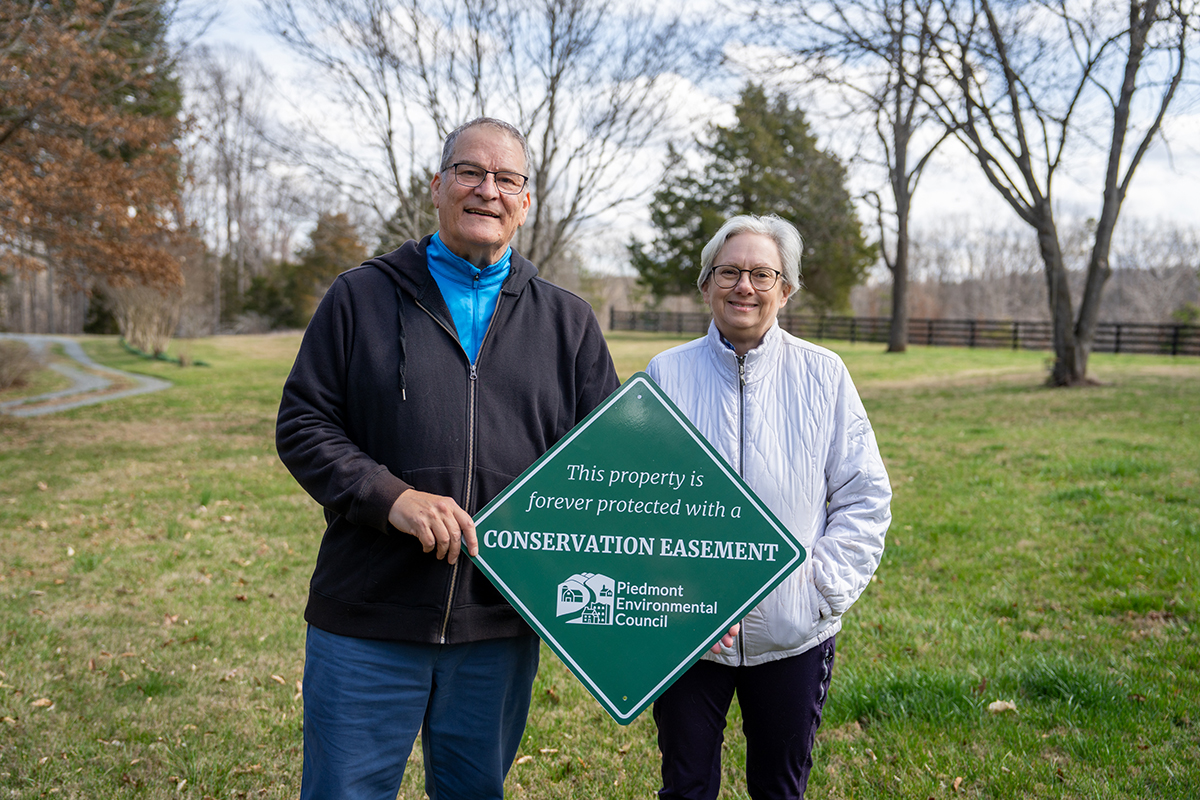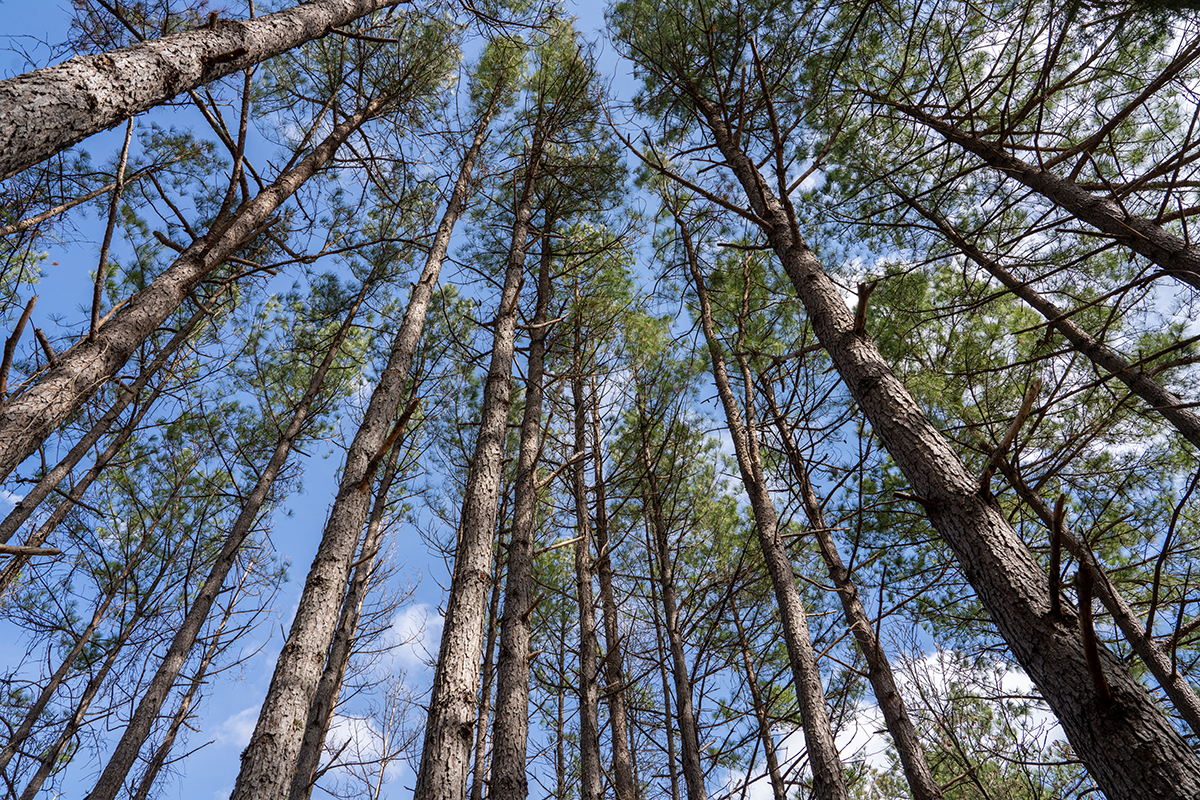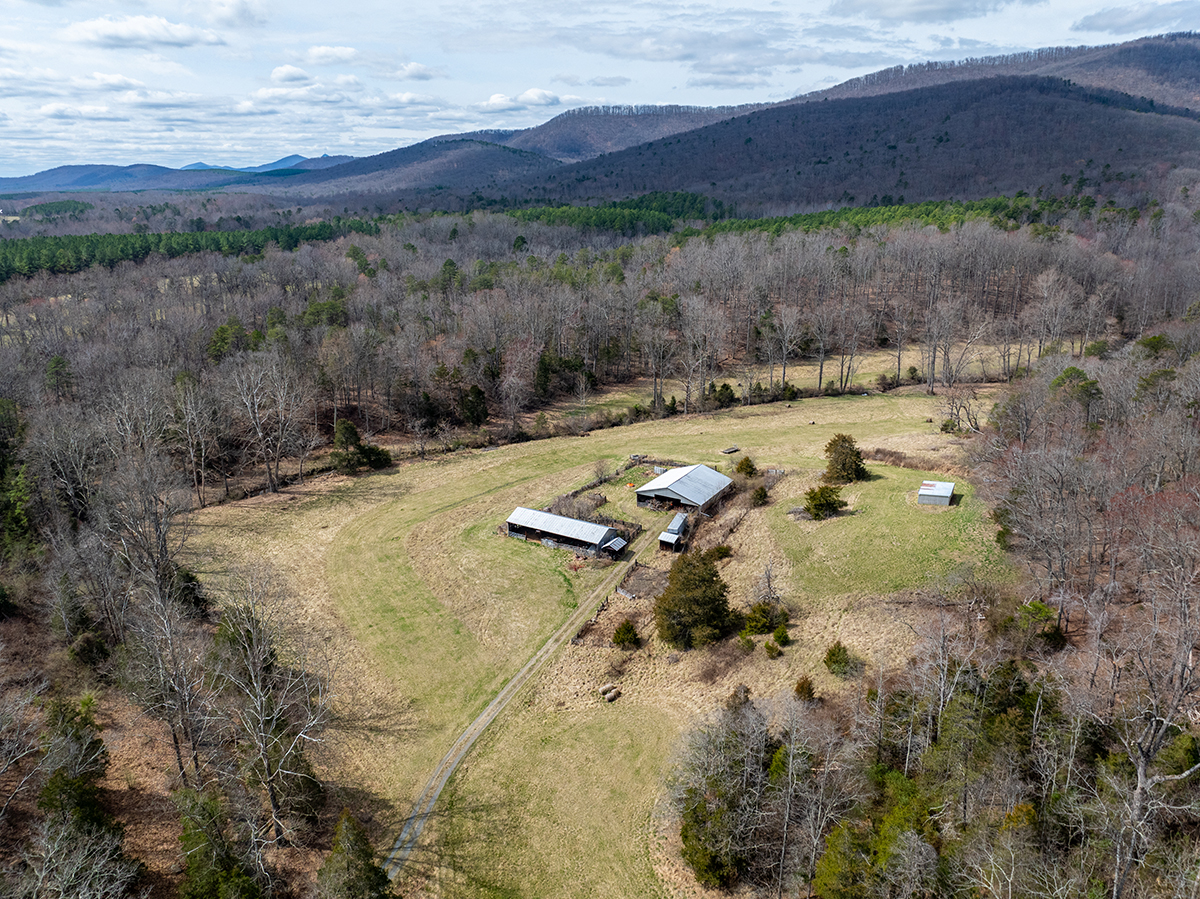Conserved lands and cleaner waters go hand in hand in Albemarle County.
At first glance, it may appear that Albemarle County’s southern edge doesn’t face much development pressure — at least compared to the north. But driving out to Schuyler to visit Pattie and Pete Hellmann’s farm, recently protected with a conservation easement, I passed several now-familiar “Land for Sale” signs along the way. One advertised 180 acres for sale, to be divided into 21-acre parcels.

Witnessing the end result of signs like these — an increase in rural area subdivisions particularly around Schuyler — is what led the Hellmanns to finally place their own 184 acres into conservation easement, and further, to enlist the help of the James River Buffer Program to plant two acres of streamside trees to help improve Green Creek, which runs through their land.
“It’s exciting that the Hellmanns [have put] their land under a conservation easement,” said Anne Marie Roberts, senior restoration field manager for the James River Association. A partnership of the James River Association and the Virginia Department of Forestry, the James River Buffer Program “requires that landowners keep the land we plant in established forest for 15 years, but this [easement] is an added reassurance that this riparian buffer will stay in trees for perpetuity.”
The Hellmanns’ land is a mix of working forest and farmland, and under the County’s zoning ordinance, they could have divided and sold it into 22 parcels. But Pattie’s historic family homestead, Rabbit Run (ca. 1790), has been in the family for over 200 years, and when retirement opened a window of opportunity, they leaned into the legal protections of a conservation easement. They saw it as a chance to prevent land loss and the negative effects of development that doesn’t align with smart growth principles, which respect natural resources in the rural areas and create better-connected communities in the development areas.
In addition to Rabbit Run, their properties include the forested recreational tract, known as Bear Trail, and the larger Keep Moving Farm. Both Rabbit Run and Bear Trail lie within the 83,000-acre Southern Albemarle Rural Historic District. Collectively, the three properties hold 144 acres of natural hardwoods and pine stands, 31 acres of active agricultural production, 120 acres of prime farmland and over a mile of frontage on Green Creek.
Green Creek is a perennial stream that flows into the Rockfish River, which ultimately empties into the James River and the Chesapeake Bay. That makes protecting waters upstream critical. As part of PEC’s conservation easement agreement, PEC Senior Land Conservation Field Representative Kim Biasiolli referred the Hellmanns to the James River Buffer Program for help restoring natural vegetation along their sections of Green Creek.
As a result, more than 600 native hardwood trees were planted along the creek in spring 2024, widening and enhancing the natural condition of these riparian buffers. “Riparian buffers provide many benefits to both water quality and wildlife habitat,” Roberts said. “Native hardwoods hold eroding stream banks with their roots, filter other land runoff and pollutants such as fertilizers and manure, shade and feed the stream’s aquatic life, plus increase forest corridors that provide food and shelter for wildlife.”
Because the buffers at Keep Moving Farm are part of a field that the Hellmanns hay for income, PEC and the James River Association worked with them to ensure that this income stream wasn’t sacrificed in the process. “Pete wanted to protect Green Creek and increase wildlife habitat, but also not shade out his hayfields,” Roberts said. “During the planning process, we can choose species that are smaller and plant those on the outer edge.”


Over on the Bear Trail and Rabbit Run parcels, the waterways were already buffered, but the conservation easement ensures that even when the pines are timbered, a 50-foot buffer of trees, along with the soils underneath, will remain undisturbed. “Wider buffers are better from an ecological perspective, as they can allow for other co-benefits like flood resiliency and wildlife habitat,” said Biasiolli.
The fact that the three parcels are adjacent to other lands protected with conservation easements makes conserving the Hellmanns’ land and stream corridor even more significant. “The more we can connect conserved lands, the more we’re protecting the ecological value of these forest blocks and the continuity of the natural landscape,” Biasiolli said.
“Even in the most rural parts of the county, we have development pressure, and every time property changes hands or is passed on to the next generation, it’s at risk of being divided and developed, regardless of whether it’s right outside of Charlottesville or 30 minutes away,” Biasiolli said. “Maintaining forested riparian buffers will have a significant impact on protecting water quality in Green Creek, so we’re very pleased that the Hellmanns have chosen to improve the management practices on their newly conserved land.”
In the end, in addition to the riparian buffer plantings, Pete said he and Pattie gave up 19 of the 22 development rights on their land in order to “keep it as natural as possible.” Down the road, neighbors and developers may build more houses, but the Hellmanns are glad to know that their corner of the world will remain intact — a place where generations to come can enjoy the native wildflowers alongside Bear Trail, the hardwoods they plan to plant after the next pine harvest, and the great place to live that they have always loved by the creek.
The James River Buffer Program is now accepting applications for the Fall ’24 and Spring ’25 planting seasons! Learn more at jamesriverbuffers.org.
This article appeared in the 2024 summer edition of The Piedmont Environmental Council’s member newsletter, The Piedmont View. If you’d like to become a PEC member or renew your membership, please visit pecva.org/join.
